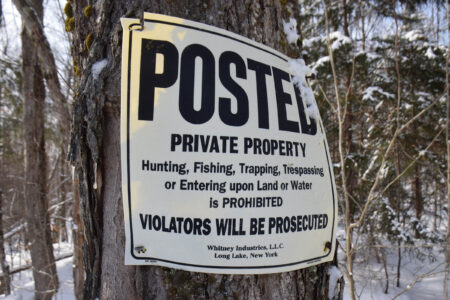Western wildfire smoke detected on Whiteface
WILMINGTON — Richard Brandt had never seen so much black carbon in the air in his decade of work as the science manager at the University of Albany’s Whiteface observatory as he did on Tuesday afternoon.
That wasn’t fog or humidity residents might’ve noticed clouding the mountains earlier this week. It was soot and ash from the hundreds of wildfires currently burning in the Canadian provinces of Saskatchewan, Ontario and Manitoba, according to Brandt and the National Weather Service.
These three Canadian provinces have record-setting numbers of wildfires flaring up, mostly caused by lightning strikes. There are also more than 80 wildfires in the U.S. west, including the giant Bootleg Fire on Oregon, which is creating its own wind and weather patterns. But Brandt said the smoke seen Tuesday was from Canada.
Wildfires are becoming more prevalent because climate change is raising the temperature of the globe, altering routine atmospheric events and creating conditions for more severe natural disasters, Brandt said.
While these fires burn millions of acres in the west, the particles and gas they release are being swept by wind currents, north of the Great Lakes and into northern New York, according to the National Weather Service.
There is measurable evidence of this being collected at the Atmospheric Sciences Research Center on top of Whiteface Mountain.
Black carbon, or soot, was recorded at the highest levels in some time on Whiteface right before the rain started on Tuesday. It was measured at 1,780 nanograms per cubic meter.
“It’s typically under 100,” Brandt said.
He said the rainstorm washed a lot of the particles out of the air and levels were closer to normal on Wednesday.
Gases like carbon monoxide were also elevated to twice their average level, too, Brandt said.
Brandt said people who work at the summit of Whiteface for the state Olympic Regional Development Authority can determine the length of visibility by looking at the layers of mountains stretching out in front of them. He said one of them told him it reminded him of what the visibility was like back in the 1980s, when pollution clouded even the High Peaks.
He said acid rain and pollution reduction has come a long way since then. New legislation, like the Clean Air Act amendment of 1990, have gradually reduced pollution over the years.
The state Department of Environmental Conservation also takes measurements at Whiteface.
Brandt said the DEC measured ten times the total particulate matter in the air that it usually does.
Some particles, like the sulfate SO4, are precursors to acid rain. SO4 has been almost undetectable in recent years, he said. But it was measurable on Tuesday — at 0.5 micrograms per cubic meters.
He said this is not likely to influence the observatory’s annual collection of acid rain precursors significantly, because it only spiked over the course of one day.
Brandt said there will probably be more spikes in particle spikes over the summer as more wildfires are likely to catch.
–
Health impact
–
On Tuesday, the DEC issued a statewide Air Quality Advisory, declaring the air to be unhealthy for sensitive groups.
The DEC said the air had an unhealthy level of PM 2.5 pollutants — solid particles and liquid droplets smaller than 2.5 microns in diameter, small enough to enter the lungs.
It warned people who are sensitive to these particles — children, the elderly, active adults and people with asthma and other respiratory diseases — to avoid strenuous activities in the outdoors.
Short-term, the effects can include irritation in they eyes, nose, throat and lungs. It can worsen diseases like heart disease or asthma.
How does climate change affect wildfires?
With more greenhouse gasses in the atmosphere, the temperature of polar regions rises. This change in temperature can affect jet streams — “rivers” of air in the atmosphere that flow between areas of warm and cold air, separating the two, typically with cold in the north and warm in the south, Brandt said.
When jet streams gets stuck in one pattern it can cause a period of extreme heat.
“If it gets static for a period of time that doesn’t allow the colder air to influence areas to the south,” Brandt said. “There’s less north-to-south flow of air.”
This is what caused the “heat dome” that impacted the American west earlier this month. It is also the cause of the rainy weathers the North Country has experienced lately, Brandt said.
While the effects of the forest fires can be seen here, thousands of miles away, conditions are much worse in western states closer to the flames.
“It makes me appreciate the rain,” Brandt said on Wednesday, “because if this place ever dried out it would be one hell of a fire.”
A timelapse map of the fires’ smoky spread created by the New York Times using data from Global Systems Laboratory and National Oceanic and Atmospheric Administration can be found at https://nyti.ms/2W1YQdX.



